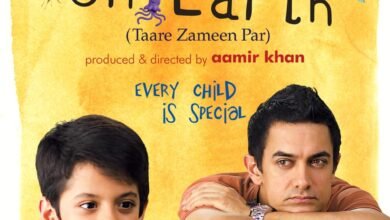Comprehensive Review of the Documentary “I Am Eleven” (2011): Listening to Children, Building a World Fit for Them to Lead and Thrive

Introduction
I Am Eleven is a 2011 documentary by Australian filmmaker Genevieve Bailey, co-directed by Henrik Nordstrom, which explores the thoughts, lives, fears, and dreams of children aged eleven across 15 countries. Inspired by Bailey’s own reflection on a time in her life when the world felt open and possible, the film presents a wide-ranging portrait of what it means to be eleven years old across cultures, languages, and environments.
While the film has drawn comparisons with the acclaimed 7 Up series, what sets I Am Eleven apart is its singular focus on this specific transitional age, when children are no longer in early childhood, yet not fully adolescents. Bailey’s premise is simple, yet profound: children, at eleven, have something to say, and the world needs to listen.
This review critically explores the film through the lens of child rights, leadership, and participation, challenging the often-repeated but limiting idea that children are “leaders of tomorrow.” The reality is that children are already leading—in thought, in expression, and in personal responsibility and adults must begin to recognize, respect, and support this truth.
Children as Agents, Not Objects
The core strength of I Am Eleven lies in its unfiltered and direct presentation of children’s voices. These are not adult interpretations of childhood. Rather, the children speak for themselves, about their dreams, fears, opinions, and identities. They reflect on global issues such as war, climate change, religion, relationships, culture, and inequality, often with a depth that challenges the assumption that children lack understanding or perspective.
This approach aligns with Article 12 of the United Nations Convention on the Rights of the Child (UNCRC), which states that children have the right to express their views in matters that affect them, and to have those views given due weight. It is also a practical demonstration of the child’s right to participation, one of the four foundational pillars of the child rights framework, alongside survival, protection, and development.
By creating a platform that simply allows children to speak, Bailey affirms the humanity and voice of every child featured. This alone is a quiet but powerful act of advocacy.
Against the Myth of “Leaders of Tomorrow”
A central reflection that this documentary inspires is the urgent need to discard the outdated belief that children are merely ‘leaders of tomorrow.’ Leadership, in its most essential form, is about responsibility and agency. If a child is capable of taking initiative, expressing conviction, influencing peers, or making informed choices, then that child is already leading.
The notion that leadership is deferred until adulthood is deeply harmful. It robs children of present relevance and places their significance in a distant future they may never reach, especially if they are not nurtured, heard, or supported today. Children begin to lead from birth. The cry of a newborn to signal hunger or discomfort is an act of self-advocacy. The toddler who learns to walk without prodding is practicing initiative. The school-aged child who asserts opinions, manages emotions, or challenges unfairness is navigating leadership in everyday life.
What I Am Eleven illustrates though subtly—is that children are active participants in shaping the present, not passive passengers waiting for a future role. They deserve recognition, not as rehearsing adults, but as full human beings whose voices carry meaning in real time.
The Role of Adults: Listening as a Form of Protection and Empowerment
One of the most important takeaways from I Am Eleven is not what the children say, but how few adults genuinely pause to hear children speak in this way. The documentary becomes a mirror, reflecting back to parents, educators, policymakers, and caregivers the question: How often do we listen to our children, without interrupting, correcting, or filtering?
Listening to children is not optional. It is an act of protection, participation, empowerment, and love. It is also a form of preparation for a world in which they are not just expected to survive, but to lead with empathy, creativity, and courage.
The challenge is not that children do not have something to say. The challenge is that adults often do not make room for them to say it. I Am Eleven helps reclaim that space.
Creating a World Fit for Children to Thrive
The call to action from this documentary is clear: if children are already leaders, then society must create structures, policies, and environments that allow them to thrive now and not eventually. This includes:
-
Integrating child participation into school governance, family decision-making, and community planning.
-
Valuing emotional intelligence, not just academic performance, as a sign of readiness and leadership.
-
Creating safe platforms, both digital and physical for children to express themselves and be taken seriously.
-
Redefining leadership to include voice, empathy, responsibility, and care not just authority or visibility.
In the words of Wess Stafford, “If we nurture the dreams of children, the world will be blessed. If we destroy them, the world is doomed.” The children in I Am Eleven remind us of what is possible when dreams are nurtured and voices are heard.
Conclusion
I Am Eleven is not just because of its content, but because of its method: it listens to children. It affirms that their thoughts matter, that their dreams are relevant, and that their opinions are worth public attention. It is a film that affirms childhood not as a waiting room for adulthood, but as a valid and potent stage of life.
More than anything, it reminds us that children are not the leaders of tomorrow, they are leaders of today. And if we take that truth seriously, we must listen to them, engage them, protect them, and above all, build a world that recognizes and respects their right to lead now.





